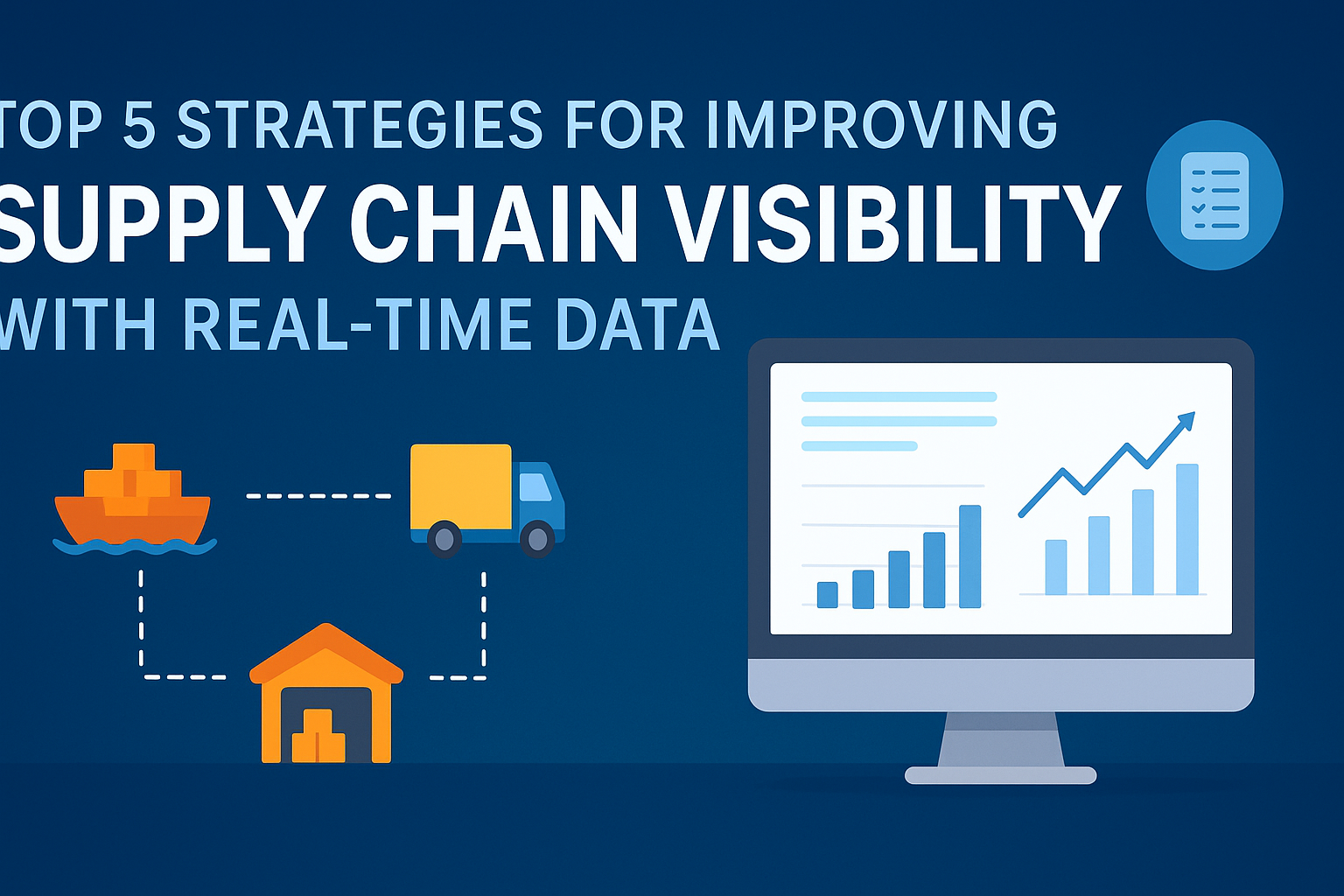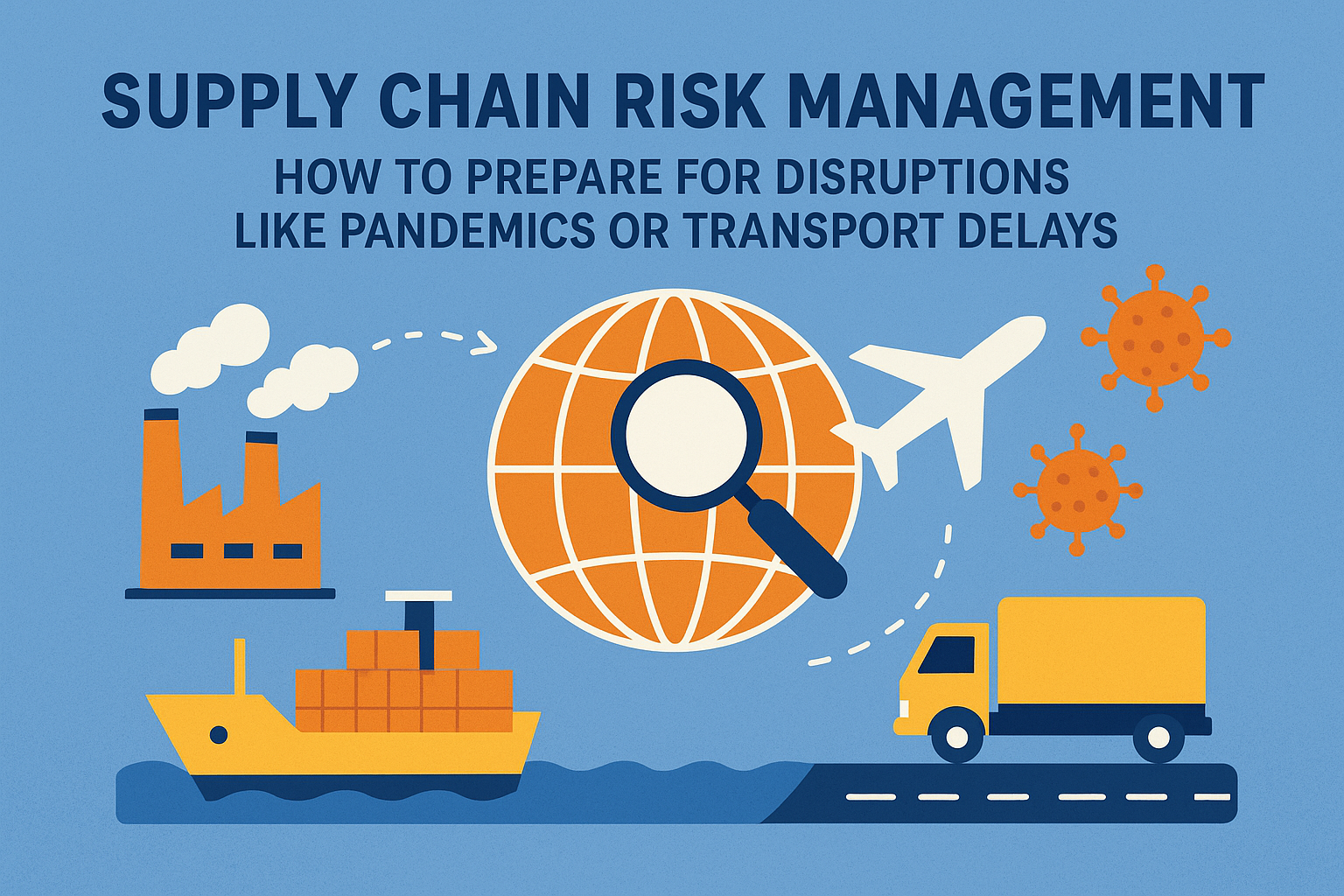In today’s fast-paced global market, supply chain visibility is no longer just a competitive advantage — it’s a necessity. Businesses are under constant pressure to deliver products faster, manage costs effectively, and respond quickly to disruptions. The solution? Real-time data.
With real-time insights, organizations can monitor their supply chain end-to-end, predict issues before they occur, and make smarter decisions. In this blog, we’ll explore the top 5 strategies to boost supply chain visibility using real-time data.
📊 1. Implement IoT & Smart Tracking Devices
IoT (Internet of Things) is revolutionizing supply chain management. By using smart sensors, RFID tags, and GPS trackers, businesses can monitor shipments, temperature, and location in real time.
Benefits:
- Get live updates on inventory movement.
- Ensure perishable goods maintain required conditions.
- Minimize losses from theft, spoilage, or delays.
💡 Pro Tip: Integrate IoT devices with your centralized dashboard for a single, unified view of all supply chain operations.
🖥️ 2. Use a Centralized Cloud-Based Control Tower
A supply chain control tower provides a single platform for end-to-end monitoring. Cloud-based systems collect data from suppliers, transporters, and warehouses, giving you real-time insights and alerts.
Why It Matters:
- Faster response to disruptions (delays, demand spikes, shortages).
- Improved collaboration between teams and suppliers.
- Better forecasting and inventory management.
🔎 3. Leverage Predictive Analytics & AI
Real-time data is powerful, but combining it with AI-driven analytics makes it actionable. Predictive analytics can forecast potential bottlenecks, optimize routes, and suggest proactive decisions.
Example Use Cases:
- Predicting raw material shortages before they impact production.
- Anticipating delivery delays and suggesting alternative routes.
- Balancing supply and demand more efficiently.
✅ Result: Reduced downtime, improved efficiency, and a stronger competitive edge.
🏭 4. Collaborate with Suppliers in Real-Time
Visibility isn’t just about your internal data — it extends across your entire supply chain network. Establishing real-time communication channels with suppliers ensures transparency and faster problem-solving.
Strategies for Better Collaboration:
- Share inventory levels and forecasts with suppliers.
- Use EDI (Electronic Data Interchange) or supplier portals for instant updates.
- Set up automated alerts for shipment status changes.
📱 5. Empower Stakeholders with Mobile Dashboards
Real-time data is most valuable when it’s accessible to the right people at the right time. Mobile-friendly dashboards allow managers, drivers, and warehouse staff to stay updated on-the-go.
Advantages:
- Quick decision-making from anywhere.
- Faster response to delays or quality issues.
- Increased accountability across the supply chain.
🎯 Final Thoughts
Improving supply chain visibility with real-time data is no longer optional — it’s a strategic necessity. By integrating IoT devices, using a cloud-based control tower, applying AI-driven analytics, collaborating with suppliers, and empowering teams with mobile access, you can create a resilient, agile, and data-driven supply chain.
The result? Lower costs, happier customers, and a future-ready business.





